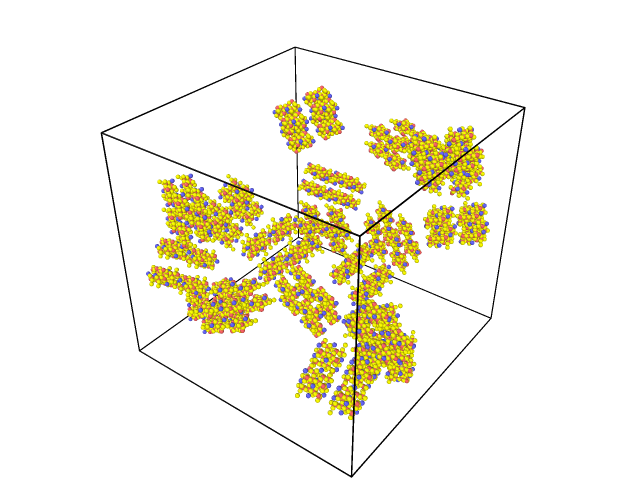Hello,
I am building a feldspar (albite) slab using CLAYFF force field. When I try to condense the molecules in a slab (as if I am using a piston) I get NAN for Potential Energy, Total Energy, and Pressure.
I have done it in other simulations, but for feldspar it is giving me NAN. Any idea about why I am having this problem, or any suggestion on what to do in this case please?
Thank you
Isa

For the kind of interactions that you have in your system, NAN for energies, forces, or pressure usually means that atoms are too close.
Axel.

Thank you Axel.
What do you think I should do in this case to solve this problem?
I have decreased the density (increasing the volume ) but I am still having this problem.
Thanks
Isa

I have only given you an explanation for the symptom. To address the problem itself you need to figure out the cause.
You need to check whether the NaN state happens immediately, then this is a hint at a possible bad initial structure, or because your nanoparticles (that you call molecules which is not a good descriptor in this case) are “exploding” at the beginning of your simulation and thus atoms are “slamming” into others at very high velocity of that, or because your compression speed is too fast, or your force field parameters are not suitable for this kind of system (i.e. they may be usable for a bulk crystal system but not nanoparticles).
In general, this is not really much of a LAMMPS problem, but a problem of the science/model you are simulating, and thus something that you need to discuss with your adviser/supervisor/tutor. The process of addressing these kinds of problems (an experiment not working or not producing the expected result) is pretty much the same for any type of research: you have to make a hypothesis about what could be the cause, you have to construct an additional experiment designed to confirm whether the hypothesis is valid or not, and then draw a conclusion from your findings and decide the next step based on that.
Axel.

Thank you Axel. Your explanations are always very helpful.

